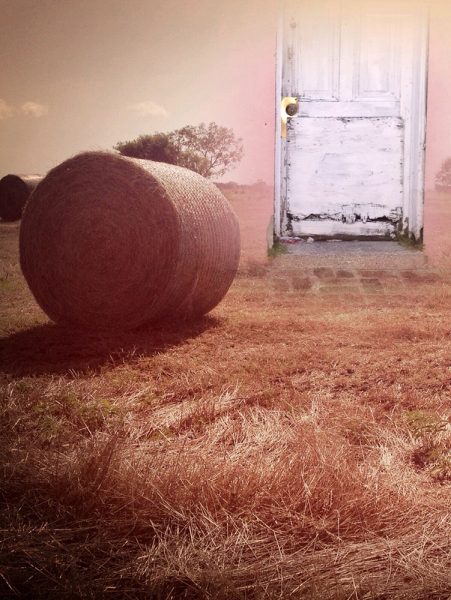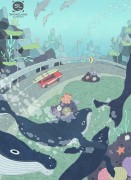You’ve juxtaposed Heidi’s disappearance with the Vietnam War. Why did you pick 1973 as the year this story unfolds? Did you know from the beginning that it would take place during this time period?
This story was drafted in a weekend workshop with the amazing and generous Kathy Fish. The exercise was to recall a time you felt a strong emotion and quickly list strong, tangible details that accompany that emotion, using the most resonant of these to craft a flash piece. For me it was the memory of fear when an eight-year-old girl disappeared while walking to Bible School in my (previously) very safe hometown in the summer of 1975. I recalled the sound of the search choppers, which led me to Vietnam TV broadcast memories; however the Vietnam War ended in the spring of 1975. I chose to back the year of this story up to 1973 to tie into my own timeline of evening news broadcasts during dinner—those horrible lists of MIA and killed boys still haunt me.
I love the use of objects in this story: Beach Barbie and Malibu Ken, the Burger King napkins, the Ouija board. These objects evoke a particular time but they also carry a lot of emotional weight. Can you talk about the choices you made with these details?
Thanks for the love! Imbedding concrete details in stories is probably my favorite thing about writing. I love finding the right objects or setting to (hopefully) work on a couple of levels. Once the story was set in 1973, the details sprung forth. Beach Barbie and Malibu Ken were both true to my experience in that era as well as representative of a carefree summer and relaxed living—the opposite of what Lucy and Margaret were about to experience. Sticking Burger King napkins under them was a subconscious choice, but while editing, I saw that detail as suggesting an underlying layer of temporary comfort, something that would dissolve. The Ouija board and its planchette (I love that word, discovered during research for this piece!) surprised me when they showed up—I wasn’t allowed to own an Ouija (considered the devil’s work, I suppose?) and so it’s always held an allure for me. It seemed plausible that Lucy and Margaret might turn to the occult object that Heidi had secretly shared with them for the answers that they weren’t getting from the news or their parents.
There are two adult women in this story: the narrator’s mother and Mrs. Carmichael. Mrs. Carmichael seems like a busybody in general but she takes on the role of protector for Margaret and Lucy. Meanwhile, Lucy’s own mother seems more concerned with her reputation. When Lucy asks to play outside, her mother says, “What kind of mother would that make me?” Can you tell us more about this mother—some things that didn’t make it into the story?
I saw Lucy’s mom as a woman who feels constantly judged by the overseeing, more experienced Mrs. Carmichael. She’s definitely hypersensitive about how her maternal actions will be perceived by Mrs. Carmichael and their entire stay-at-home-mom neighborhood. She’s unsure of the “right” way to be a mother in these times—their next-door neighbor/babysitter is missing, young men are dying at war every day, her daughter wants to be outside with a (likely) predator still at large, and her pesky neighbor is an ever-present sentinel. She’s in a tough spot. In one revision, I had her dropping pots and casseroles while the Vietnam death toll was relayed on the news, but in the spirit of flash, Lucy’s mom got pared down to the bones of her. Somehow I felt that apron slap and one line of dialogue did most of the characterization that I wanted.
I’m curious whether Lucy kept Heidi’s secret about Conrad. If you wrote a sequel, what would happen after Heidi’s body was found? Can you tell us if Conrad was the one who murdered Heidi?
Ooooh! Such delightfully tough questions! I do think Lucy ultimately kept Heidi’s secret about Conrad. I think she believed in the sweetness of their love—the hair brushing, this boy who called Heidi “magic,” Miss Piggy and Kermit the Frog fantasy love. Truth is, I believed in their love when I wrote it, and so I think I’d prefer to leave Conrad as innocent. He’s one of the good guys. I could imagine a sequel where Heidi left some evidence of her relationship with Conrad behind—a guy who brushes your hair would likely write love letters too, right? This time period was so ripe with racial tension that the discovery of Conrad and the presumption of guilt might, unfortunately, have gone hand-in-hand.
What is the best piece of writing advice you’ve received?
Honestly, this is the toughest question of all, as I’ve been fortunate to absorb craft lessons from so many talented writers.
The advice that I hear in my brain every time I sit down to write came from Bill Henderson, novelist and remarkable instructor with the awesome Lighthouse Writers Workshop. Every word choice matters. This sounded simple, until Bill dissected works by the likes of Denis Johnson and Flannery O’Connor. For me, Bill illuminated the work it takes to be great versus good, and it all boils down to being purposeful and surgical with words.
The editing advice that I use the most came from a weekend workshop with George Saunders at Lighthouse. He advised that when editing a piece, mark where you feel that the energy drops. Work those spots out until they’re gone. In fact, Saunders said he wished that was how all writing workshops gave feedback—the energy meter. No words, just marking lines where energy drops. I just love this.



 The core workshop of SmokeLong Fitness is all in writing, so you can take part from anywhere at anytime. We are excited about creating a supportive, consistent and structured environment for flash writers to work on their craft in a community. We are thrilled and proud to say that our workshop participants have won, placed, or been listed in every major flash competition. Community works.
The core workshop of SmokeLong Fitness is all in writing, so you can take part from anywhere at anytime. We are excited about creating a supportive, consistent and structured environment for flash writers to work on their craft in a community. We are thrilled and proud to say that our workshop participants have won, placed, or been listed in every major flash competition. Community works.